

20cm



The Campanula genus, commonly known as bellflower, encompasses a delightful array of perennial plants that grace gardens with their bell-shaped blooms. With a palette that includes hues of blue, purple, white, and pink, these charming flowers are complemented by the lush green of their foliage. Ideally suited for borders, rockeries, or as a ground cover, the Campanula is a versatile choice for adding a touch of elegance and color to any garden setting.


20cm





20cm



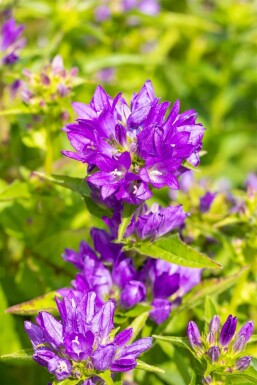

30cm




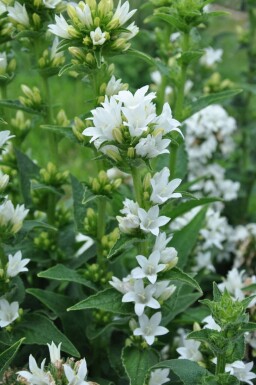

60cm





50cm




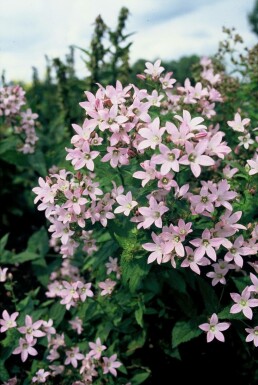
120cm



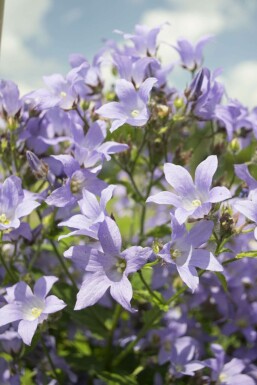





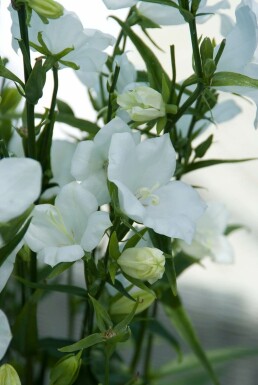

80cm


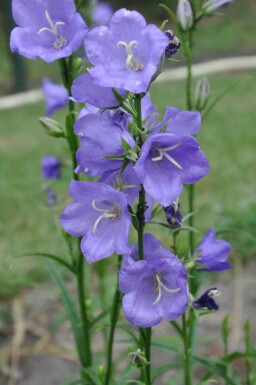

80cm











15cm



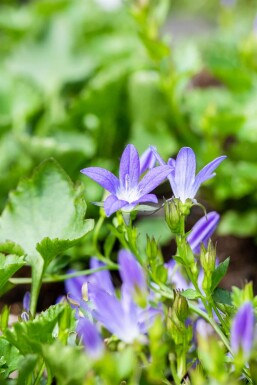

15cm





30cm





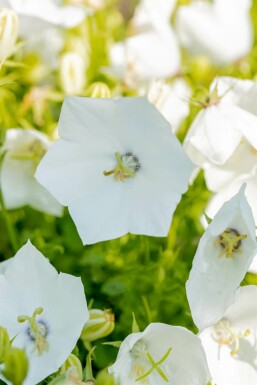

30cm



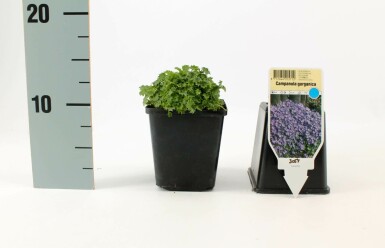
15cm



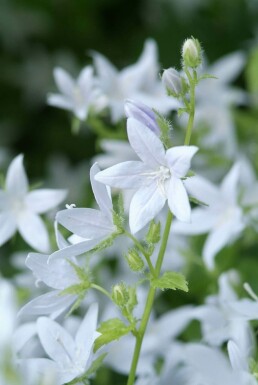

15cm



The Campanula, commonly known as bellflower, is a charming and diverse genus that graces gardens with its enchanting bell-shaped blooms. These plants are highly versatile, thriving in borders, group plantings, and containers alike. With a prolonged flowering period from May through September, the Campanula genus offers a delightful display of colors ranging from blues and purples to pinks and whites.
Campanulas are celebrated for their vibrant and copious flowers that bring life to any garden setting. They are suitable for a wide range of uses, including edging, potting, and as a standout feature in planters. Flourishing under full sun to partial shade, these plants maintain a lush green foliage throughout the year, which can vary from deciduous to evergreen, depending on the species.
The genus is exceptionally accommodating, growing successfully in pots and adapting to various soil types. The flowers bloom profusely in the summer, with hues of blue, purple, white, and pink, transitioning mainly to white and blue in the autumn.
While Campanulas are easy to grow, they do require some attention to ensure optimal health and flowering. These are a few tips to help you care for your Campanula plants:
Embark on a journey through the enchanting realm of bellflowers, where each Campanula variety unveils a unique charm and grace. With blossoms that range from delicate whites to profound purples, these botanical treasures imbue gardens with a serene and whimsical aura, perfect for border fringes or as a quilt of groundcover.
We would like to provide some tips on how to plant and care for a Campanula. By following these tips, you can be sure to enjoy your Campanula for a long time.
Thriving best in locations that receive full sun to partial shade, Campanula species exhibit optimal growth when provided with ample sunlight. However, they are quite adaptable and can flourish in less intense light conditions, where their vibrant flowers still emerge with grace. To ensure the health and vigor of these plants, careful attention should be paid to the positioning, ensuring that they have access to sunlight for at least a few hours each day. Their versatility in lighting conditions makes them a splendid choice for a variety of garden settings, from borders to pots and planters.
For successful establishment, Campanula should be planted in a location that receives full sun to partial shade, which caters to its versatile nature. The soil must be well-drained yet capable of retaining enough moisture, as the plant is not drought-resistant. When planting, ensure adequate spacing to allow for its spreading habit. The optimal time for planting is during the cooler months of spring or autumn, which encourages robust root development and prepares the plant for vigorous growth in the flowering season. Regular watering after planting is crucial to help the roots establish.
To maintain the vibrant display of Campanula's blossoms throughout its flowering season, a balanced approach to fertilization is vital. Apply a general-purpose, slow-release fertilizer in the early spring, as new growth emerges, to provide a steady supply of nutrients. This initial fertilizing will support the plant through its peak blooming months from June to September. A second light application of fertilizer may be beneficial in the summer to bolster the late-season flowers, ensuring a continuation of color into autumn. Since Campanula thrives in well-drained soil, ensure that fertilizer is incorporated into the soil around the plant, avoiding direct contact with the foliage to prevent burn. Regular feeding, coupled with consistent watering, will result in an optimal growth and flowering of this charming species.
While Campanula species are generally low-maintenance and do not require rigorous pruning, minimal tidying can promote a more prolonged flowering period. After the initial bloom in late spring or early summer, deadheading the faded flowers can encourage a second flush of blooms. For varieties that tend to spread, cutting back the foliage after flowering maintains the plant's shape and prevents excessive self-seeding. In early spring, remove any dead or damaged foliage to allow for new growth. This gentle approach to pruning will keep the plants healthy and aesthetically pleasing.
To ensure the Campanula thrives, it is paramount to maintain consistent soil moisture. These charming bellflowers are not drought-tolerant and require regular watering, particularly in the heat of the summer months. Watering should be done deeply and less frequently, rather than shallow, daily sprinkles, to promote a strong and deep root system. During periods of extended heat or rain shortfall, increase the watering schedule to compensate for the additional moisture required. During the cooler months, reduce the frequency, but never allow the soil to become completely dry.
A delightful aspect of the Campanula is its ability to thrive in both sunny and partially shaded areas, making it a versatile addition to various garden spots. Its charming bell-shaped blossoms create a cascade of vibrant color throughout the summer. Gardeners might also appreciate that this species, when potted, can be equally at home adorning indoor spaces as it is outdoors, providing a continuous touch of natural beauty in a range of settings.
To promote health and invigorate growth, division of Campanula should be carried out in spring or autumn. This process involves removing the plant from its location, carefully dividing it into several sections, and replanting these divisions. The most vigorous and productive segments are typically found around the periphery of the plant. Replanting these parts not only stimulates robust growth but also aids in maintaining the dense, lush display of bell-shaped blooms. Division is a practical way to manage the size and shape of these charming bloomers, ensuring a delightful presence in the garden season after season.
The Campanula, with its delightful bell-shaped flowers, is a charming addition to any garden. This perennial plant boasts a long flowering period, gracing your space with a cascade of purple, blue, or white blooms. Easy to grow and care for, Campanula is an enchanting choice for gardeners seeking continual beauty.
